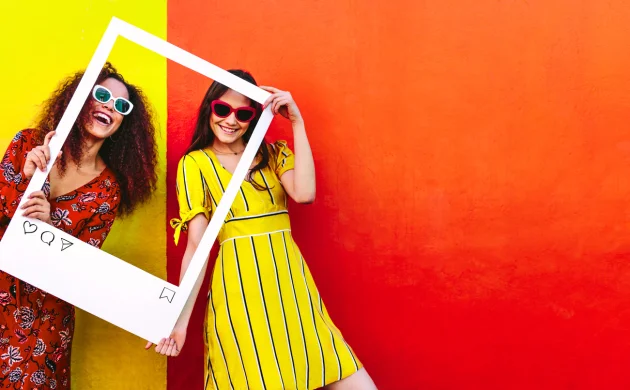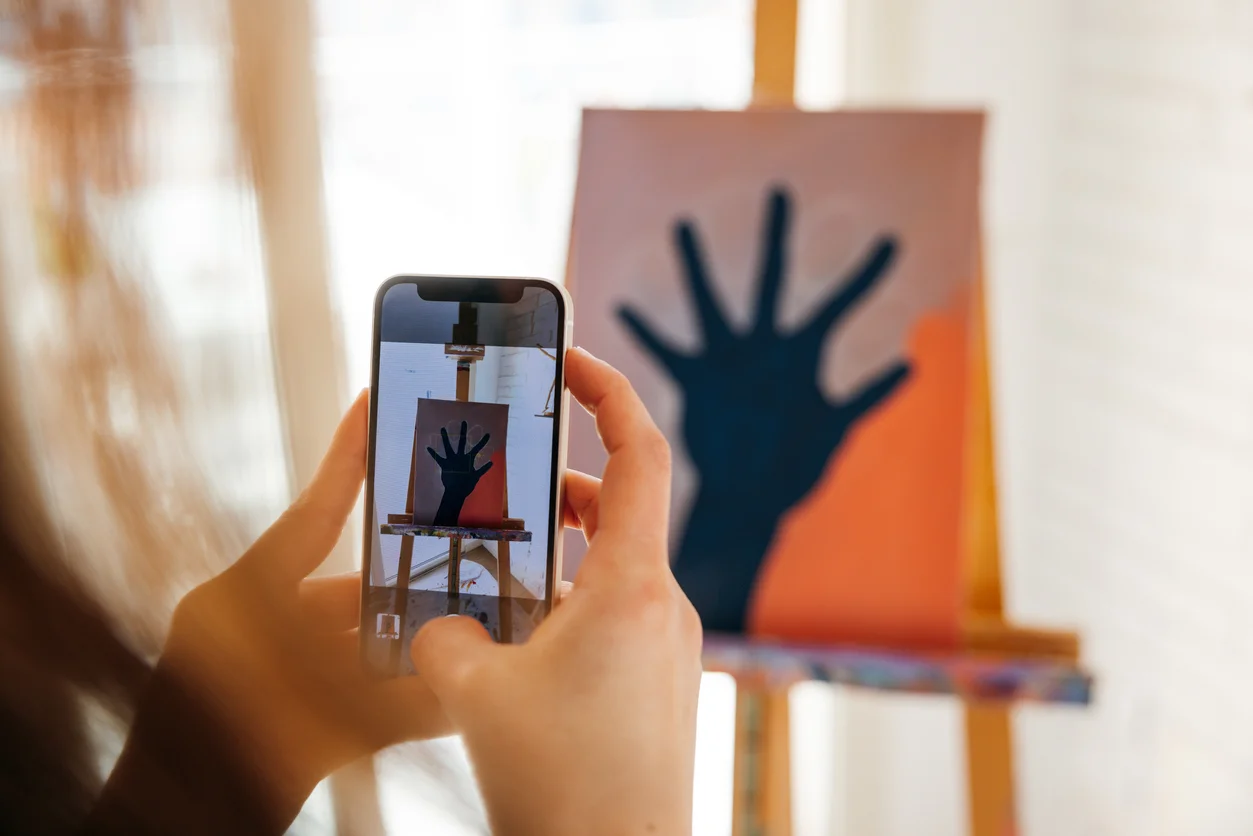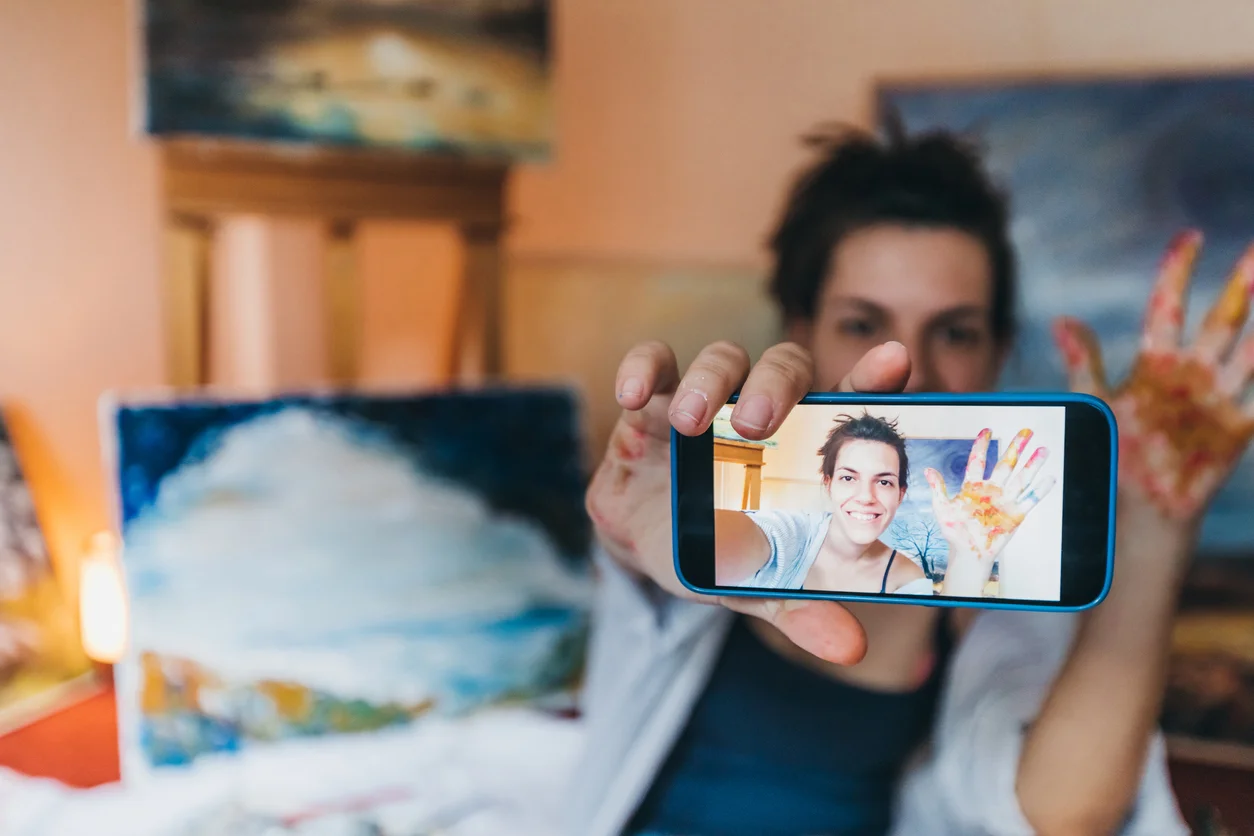The best social media strategy for artists: which one suits you?

In most cases, artists aim to sell their art and take their art business to the next level. To achieve this, using social media is definitely a good idea. It is a great tool to attract viewers to the artist’s own website. But: what do you post, and when, and what exactly? And which social media platforms are the ones to go for? Here are some pointers how to plan your social media strategy.
Which social media channel suits you best?
This is a personal choice and may depend on your age group, and on the type of person you are. For instance, younger people feel at home on TikTok. What we recommend is: start with the platform you might already be familiar with, and on which you may already have followers. But also give it a thought which social media your potential clients use. To show your art, we like the following options:
Its performance these days may be debatable – you can’t be blamed for thinking you are more visible on Facebook when you pay for it. However, most people have a Facebook account, especially the older generation. Which is exactly the group buying art. It is a fact the average art buyer is male, middle aged and white.
You could use Facebook in various ways: by opening a business account, and/or a personal account. A personal account could be ‘liked’, and reacted to, more often than a business account. It is possible to use the platform through your personal account - ‘befriend’ as many people as possible, at a later stage you could target them with your art.
The good thing about Facebook is there are no limitations regarding text length, so you may share longer stories and show great photos of your work. Post photo series, create an online exhibition of your art that will be seen by your followers.
Instagram is a good looking and trendy platform used by many artists. A common complaint is exactly that: that artists are mainly followed by other artists, liking each other’s posts. But Instagram has also many interesting other users, on average a bit younger and more involved than the Facebook public. Share your short stories, great photos and fun photos, also your short videos on Instagram.

Linkedin
Linkedin is the platform for professionals and the business world. You as an artist belong here. Also cheering up the timelines of your followers with your creative posts, a nice break for them on a business day. Linkedin has also ‘Lion’ users. This stands for Linkedin Open Networker, people who enjoy connecting. You could use this option to let your network grow considerably.
Twitter is a very useful platform to discuss various topics with others, if you are open to this sort of approach. You may share photos, videos and messages up to 280 characters. For instance, share an exhibition you have visited, or anything else of interest. This is a subtle way to invite others to check out your profile, hoping they may click on your link to visit your personal website.
Google posts
This platform is not often highlighted, but Google is very strong in ‘findability’. When you add a post with a strong title it is very likely to be found by others who search using the same keywords. Google works really well when you write blogs on your own website and share the link on Google.
What should you post on social media?
The 80/20 rule
Facebook, Instagram and Twitter are great websites for marketing your art business, but do not forget they are social media – we emphasise ‘social’ here. Meaning people primarily want to be entertained, and not be confronted with sales talk all the time. Remember the 80/20 rule: 80 percent entertainment and 20 percent promotional. And exactly that is the nice thing about content marketing. Fun content creates goodwill and may help to sell your work. It also invites your fans to engage.
How to entertain your fans
Surprise and dazzle with photos and videos – the art is to grab the attention on timelines where people easily scroll down. Examples: make a time-lapse video of your artwork during its creation, a videoblog about your studio, exhibition or artist residency. Take photos of your work in progress and tell your followers they soon will be shown the finished work. Or take your viewers behind the scenes, to show how you work in your studio.

How to post on social media
Different platforms, different posts
Every social media channel is different. Not only in the way you can post, but the public may also vary. So, instead of posting the same thing on each platform, try to mix and match. For instance: post a work in progress on Instagram and add an album on Facebook, showing the entire process. This might be more work for you, but it will be an incentive for your fans to follow you on various types of platforms.
Don’t overdo it
Do not post too much on too many channels, and certainly not in an uninspired and half-hearted way. Post quality. This takes a bit of time to create, but it is worth it. Post on the platforms you like and suit you.
Analyse what works
Most social channels show how often posts are viewed. This is very useful information. You can see which posts work: did it get many likes and reactions? Look at the successful ones and post more of this type.
When should you post
Set time aside to create social media content
Schedule a fixed moment each week to solely focus on your social media strategy. It is more efficient and incorporating this as a routine may even inspire new ideas for your artwork.
Plan your posting
After creating content for social media, plan when to post. To help the planning, tools like Heropost are very useful. On social media you can usually see when your messages are read. Take into account when people look at their social media channels most often. For instance: after waking up, at lunchtime or after dinner. During the weekend this varies, people are generally less active on social media.
Planning when to post works well and frees up time at other moments to do what you like best.
React every day
So, there are tools to help you with your planning. But the thing tools will not do for you is reacting in a nice way to your fans. This is a very important part of being ‘social’. It should be your aim to interact with your fans and other artists. Check your social media accounts every day. Respond to every single reaction to your posts. Even a simple ‘thank you’ works wonders. Do not forget these are the people who could be the potential buyers of your work. A pleasant approach might lead to future sales.

Keep it enjoyable for yourself
This is very important. Social media should be a natural and nice addition to how you would like to communicate with your public. If you don’t like creating content for certain platforms try adapting your approach, to further your development in a positive and creative way. If you really don’t like a social media channel, just stop using it and try another one. The good thing is you could just post less or start again from nothing, social media channels are very forgiving.
Try it out
Artists often see social media as a many legged monster. This really is not necessary. Just try out this social media strategy, give it a year, and see how creating more quality content frees up time: to make art and sell it!


